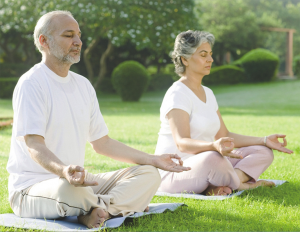By Dr Chandra Nanthakumar
The lexical item, “simplicity” is defined as the quality or condition of being simple, or easy to understand or do. It is also the quality or condition of being plain oruncomplicated.
Looking back at our lifestyles, we may ponder on the following: Are we leading a life of simplicity or a life of luxury and extravagance? Are we eating in moderation or are we loading our digestive systems with unhealthy foods that contain artificial colouring and flavour enhancers that tickle our taste buds? Due to indiscriminate consumption of large amounts of food, many are becoming victims of various lifestyle diseases.
In Malaysia, the total health expenditure has escalated in recent years. According to Lau (2017), health spending per capita has increased 2.5 times in 17 years, from a moderate RM641 in 1997 to RM1,626 in 2014.
What is more with people now turning to private hospitals for medical treatment. Repeated visits to healthcare centres may eventually leave our bank accounts in the red. When one is inflicted with a disease, the individual is endowed with the option of either seeking medical help, or ignoring the tell-tale signs and letting nature take its course. On the other hand, there are exercise freaks who conscientiously take time off to workout and burn the extra calories, while others continue to indulge in all kinds of cuisines, including junk food. Those who ignore the tell-tale signs may resort to comfort eating, smoking or drinking when stress beats them. Before you know it, lethargy would set in and this will slowly but gradually be followed by a host of dis-eases, which are, most of the time, the adverse effects of stress.
Leading a life of simplicity is an easy task if one has a clear direction in life and very minimal expectations.
If the human mind is cluttered with unnecessary thoughts round the clock, then it inevitably causes discomfort in the body and mind. For some individuals, there is always this need to do better than others, compare and contrast with the Joneses and the list goes on.
Too simple to be true
According to Albert Einstein, a calm and modest life brings more happiness than the constant pursuit of success combined with constant restlessness. If there is no check and balance in the lifestyle we lead, one by one diseases may start to engrave in the cells, damaging the organs and eventually causing death.
One easy way to achieve a life of simplicity is to harmonise the body and mind through practices that are meditative in nature. There are ample such practices but one simple one that is not to be missed is yoga. This ancient scientific practice helps one live in the moment (Pascal, 2013). Here one is able to focus on the “now”. It is now, in this moment that one is able to feel most calm, composed and centred. The practice of yoga, amongst other rungs, encompasses asanas (postures), pranayama (expansion of life force), pratyahara (withdrawal of senses), dharana (concentration) and dhyana (meditation).

It’s so simple to practise yoga as there is no entry requirement. All you have to do is be present for the class you have enrolled in. It’s so simple because you do not require sophisticated equipment. All you need is a mat. As a matter of fact, trained yoga practitioners merely practise on the bare floor. It’s so simple because unlike other forms of sports like jogging, swimming or kayaking, yoga does not necessitate special apparel or footwear. In fact, yoga is practised sans footwear. Any loose attire would deem fit for the practice of yoga. It’s so simple because you can practise it wherever you are – at home, at the park, at work or even when you are on a holiday.
While many poses are practised on the floor, a sizeable number of poses can also be performed on the chair or in standing position. Besides asanas, the practice of pranayama, dharana and dhyana too can be done in a sitting position on the floor or chair, or in standing position. The practice of yoga has tremendous effects on the body and mind. Besides improving one’s flexibility, it helps to reduce cortisol (stress hormone) levels and blood pressure. Since the practice of asanas, which is coordinated with breath, focuses on the journey of going into the asana, staying in the asana and coming out of the asana, one will experience a great reduction in the number of thoughts, thus inducing a sense of calmness in the body and mind. Endorphins that are released during the practice of asanas help in the management of not only mood swings, but also stress. That is not all – the practice of yoga is known to keep many dis-eases out of sight.
Something as simple as yoga is too good to be ignored. It is akin to food for the development of a healthy body and mind. If you have not started, you seriously should consider doing it right away.
References
- Lau, B. (20 March 2017). Malaysia’s MOH says health spending per person has doubled in 17 years. Retrieved from https://today.mims.com/malaysia-s-moh-says-health-spending-per-person-has-doubled-in-17-years.
- Pascal, J. (2013). Yoga and your mental health: The surprising connection. Retrieved from
http://www.gaiamtv.com/article/yoga-and-your-mental-health-surprising-connection

